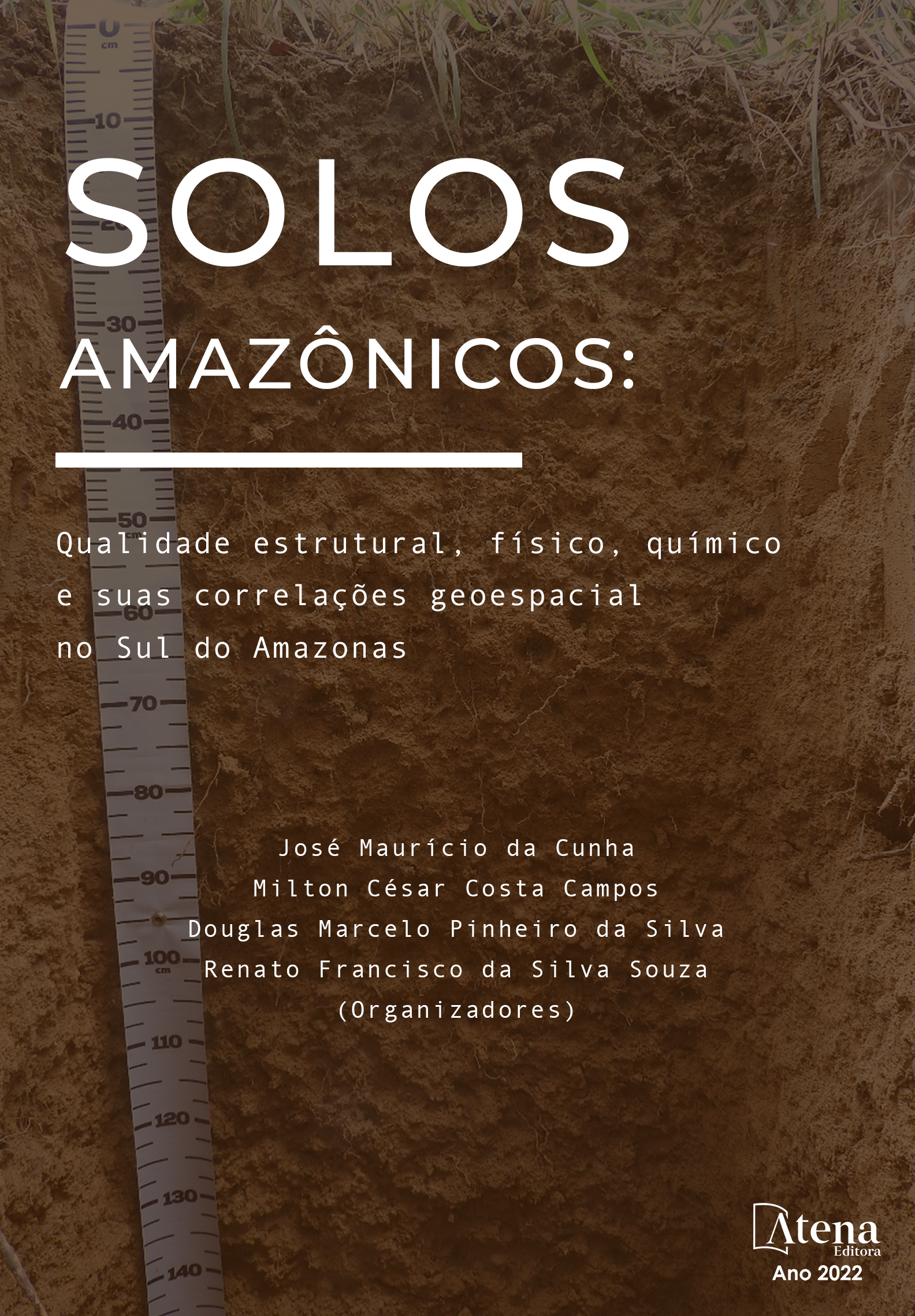
3 - SUSCETIBILIDADE MAGNÉTICA DE ARGISSOLOS SOB FLORESTA E CULTIVADOS NO SUL DO AMAZONAS
As ações antrópicas têm motivado inúmeras pesquisas acerca dos impactados solos naturalmente pobres da Amazônia brasileira, exigindo o uso de atributos diagnósticos cada vez mais específicos de cada mudança ambiental. O uso de proxies magnéticas inerentes do solo pode ser a chave para entender as alterações que ocorrem no solo e ambiente. Portanto, este estudo objetiva caracterizar e ampliar o conhecimento a respeito do sinal e origem das propriedades magnéticas da classe dominante de solos (Argissolos) do Amazonas para futuro monitoramento proxy ambiental. Um Argissolo natural e três cultivados foram amostrados utilizando-se malhas sistemáticas em três camadas: 0,0-0,05; 0,05-0,1 e 0,1-0,2 m. Um total de 192 amostras / área foram submetidas a análises físicas, químicas, mineralógicas e de suscetibilidade magnética (χ), e aos resultados foram aplicadas análises estatísticas descritivas, uni e multivariadas. A conversão dos Argissolos naturais fisicamente bons e quimicamente pobres e ácidos para cultivos agrícolas, causou o aumento da densidade e amplitude do pH em água e Al3+ do solo, e a redução da macroporosidade, umidade gravimétrica, teores de fósforo disponíveis e ferro oxalato, e da incorporação de carbono orgânico em profundidade. Todos os Argissolos avaliados têm caracteristicamente baixa χbf e χaf devido à baixa concentração de óxidos de ferro com baixa χ, e sofrem alto aprimoramento na χfd, o que sugere-se ser decorrente dos processos pedogênicos, intemperismo intenso, clima favorável e alta presença de diamagnéticos que interferem na sua medida. A χbf e χaf em 0,0-0,05 m e χaf e χfd% em 0,1-0,2 m foram altamente representativos dentro dos cultivos, caracterizando-se como uma proxy adequada ao monitoramento da fertilidade dos Argissolos no sul do Amazonas.
Palavras-chave: Conversão agrícola; óxidos de ferro; sinal magnético; proxy.
3 - SUSCETIBILIDADE MAGNÉTICA DE ARGISSOLOS SOB FLORESTA E CULTIVADOS NO SUL DO AMAZONAS
-
DOI: 10.22533/at.ed.4732219053
-
Palavras-chave: -
-
Keywords: -
-
Abstract:
Anthropic actions have motivated numerous researches on the impacted naturally poor soils of the Brazilian Amazon, requiring the use of diagnostic attributes that are increasingly specific to each environmental change. The use of magnetic proxies inherent in the soil may be the key to understanding the changes that occur in the soil and the environment. Therefore, this study aims to characterize and expand the knowledge about the signal and origin of the magnetic properties of the dominant class of soils (Argisols) of Amazonas for future environmental proxy monitoring. One natural and three cultivated Argisol were sampled using systematic meshes in three layers: 0.0-0.05; 0.05-0.1 and 0.1-0.2 m. A total of 192 samples / area were submitted to physical, chemical, mineralogical and magnetic susceptibility (χ) analyzes, and descriptive, univariate and multivariate statistical analyzes were applied to the results. The conversion of the physically good and chemically poor and acidic natural Argisols to agricultural crops, caused an increase in the density and amplitude
of the pH in water and Al3+ of the soil, and a reduction in macroporosity, gravimetric humidity, available phosphorus and iron oxalate contents, and the incorporation of organic carbon in depth. All evaluated Argisols have characteristically low χbf and χaf due to the low concentration of iron oxides with low χ, and undergo high enhancement in χfd%, which is suggested to be due to the pedogenic processes, intense weathering, favorable climate and high presence of diamagnetic that interfere with your measurement. The χbf and χaf at 0.0-0.05 m and χaf and χfd% at 0.1-0.2m were highly representative within the crops, characterized as a good proxy for monitoring the fertility of the Argisols in the Amazon region.
Keywords: Agricultural conversion; iron oxides; magnetic signal; proxy.
-
Número de páginas: 51
- José Maurício da Cunha


